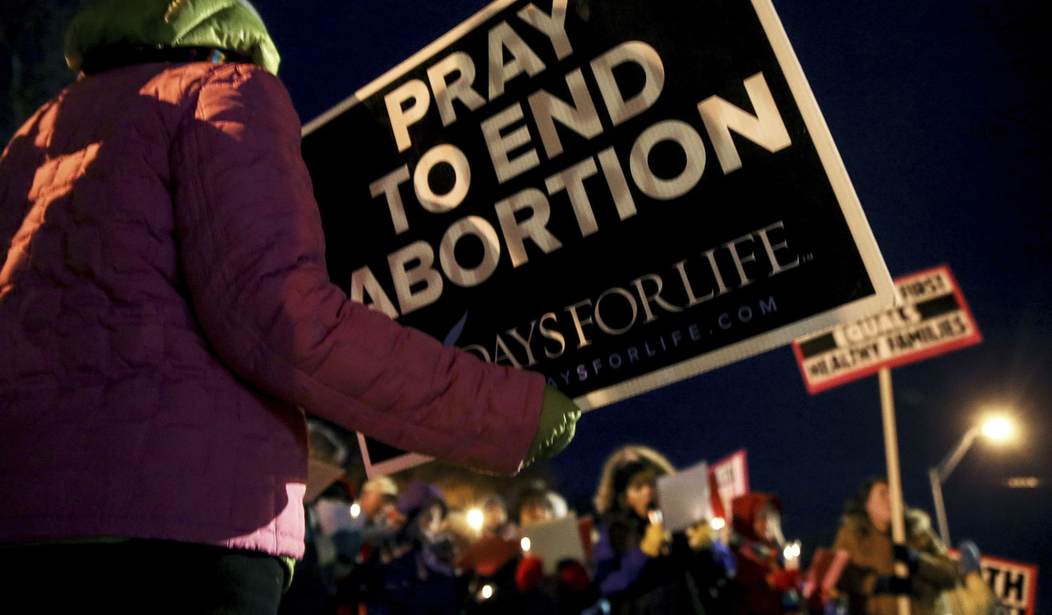The 2019 abortion numbers from the Centers for Disease Control (CDC) are in, and abortions are actually going up, thanks to the increase in chemical abortions. Even more concerning is that, as I reported earlier this week, chemical abortions led to a 507 percent increase in emergency room visits from 2002-2015 for women who used this method. Not only did ER visits increase for chemical abortions, but so did the use of them.
For 2019, 629,898 legal induced abortions were reported to CDC. It's crucial to note that abortion reporting is voluntary. The 49 reporting areas include 47 states plus D.C. and New York City.
Not included are Maryland, New Hampshire, and California. Until Gov. Chris Sununu (R-NH) signed a budget in late June prohibiting most abortions after 24-weeks, New Hampshire had allowed for abortions up until birth for any reason.
California is not only the most populous state, but has some of the most relaxed abortion laws in the country. This includes when it comes to that chemical abortions method, which is handed out to college students at California public universities. Gov. Gavin Newsom (D-CA) signed such legislation into law in 2019. Americans United for Life (AUL) ranked California the 47th most pro-life state for 2021.
In the "Findings and Reports" section, the CDC notes, with added emphasis:
From 2010 to 2019, the number, rate, and ratio of reported abortions decreased 18%, 21%, and 13%, respectively. However, compared with 2018, in 2019, the total number increased 2%, the rate of reported abortions increased by 0.9%, and the abortion ratio increased by 3%.
...Early medical abortion is defined as the administration of medications(s) to induce an abortion at =9 completed weeks’ gestation, consistent with the current Food and Drug Administration labeling for mifepristone (implemented in 2016). In 2019, 42.3% of all abortions were early medical abortions. Use of early medical abortion increased 10% from 2018 to 2019 and 123% from 2010 to 2019...
Recommended
As I also mentioned in my reporting about these dangerous chemical abortions, the Biden Administration's FDA is expected to make a decision on December 16 whether or not to make permanent the move that was made, with the pandemic being the given excuse, to relax safety regulations for the method. One such regulation is that at this time women no longer need to have an in-person doctor's visit to acquire the abortion pills.
Michael New, a research associate at the Busch School of Business at the Catholic University of America and an associate scholar at the Charlotte Lozier Institute (CLI), who often weighs in on the abortion issues, tweeted about the numbers. He highlighted the good, as well as the bad.
(2/4) Pro-lifers have still made long term progress. According to Guttmacher, the abortion rate has declined by over 50% since 1980.
— Michael New (@Michael_J_New) November 24, 2021
According to @CDCgov, the abortion rate has declined by 20% since 2010.
Another takeaway, beyond the rise in chemical abortions leading to an overall increase in abortions, is that public policy matters.
Public policy plays a key role. In 2018, West Virginia voted to quit funding abortions through their Medicaid program. Abortions fell 21%
— Michael New (@Michael_J_New) November 24, 2021
In 2017, Illinois started funding abortions through Medicaid. For the 2nd year in a row, abortions increased by more than 9% in Illinois.
Whether or not to include abortion funding through Medicaid is something that is being debated at the federal level as well. The Hyde Amendment, which has been in place since 1976 and has passed every year with bipartisan support as a budget rider, prevents taxpayer dollars from funding elective abortions.
Democrats in the White House and in Congress, however, have sought to purposefully exclude Hyde from the reconciliation spending bill. The bill just recently passed the House without Hyde, and is headed to the Senate, though Sen. Joe Manchin, a moderate pro-life Democrat from West Virginia, has signaled he will not vote for the bill if it does not include Hyde protections. Since the bill is expected to get no Republican support, Democrats cannot afford to lose a single member.
Should Hyde somehow indeed get eliminated, though, it's safe to assume one can expect the amount of abortions will go up, and will be paid for by taxpayers.
As Dr. New told Townhall, the "economics are straightforward, if abortions are covered, the cost decreases, and more women will obtain abortions." Dr. New also pointed to his report from 2016, which estimated that there would be 60,000 more abortions taking place every year if Hyde were to be eliminated.
The issue of public policy, however, also makes for good news. This year has been a particularly busy one for pro-life legislation, with approximately 500 pro-life laws advancing in the state legislature. According to analysis from CLI, that number was at 489 as of May 31, 2021.
States may be even more emboldened to pass even more pro-life legislation should the U.S. Supreme Court decide to weaken Roe v. Wade, which along with its companion case of Doe v. Bolton, significantly restricts states when it comes to what pro-life laws they can put into place. On Monday the Court will hear oral arguments for Dobbs v. Jackson, which will examine the constitutionality of pre-viability bans, specifically as it applies to Mississippi's 2018 abortion ban on most abortions after 15 weeks.
The Court is also expected to release a decision soon about a Texas abortion law that prohibits most abortions once a fetal heartbeat is detected, usually at around six weeks. The Court allowed the law to go into effect as intended on September 1.

























Join the conversation as a VIP Member